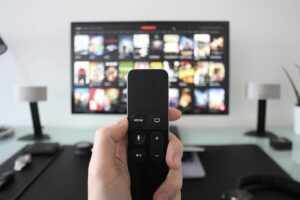When considering the purchase of a new television, popular high-end brands like Samsung or LG may come to mind, but their premium price tags can be prohibitive for many individuals. This prompts many consumers to explore alternative options, such as TCL and Hisense, which offer a diverse range of TVs with various features and specifications.
In this article, we aim to provide a comprehensive comparison between TCL and Hisense TVs to aid you in making an informed purchasing decision. Join us as we delve into the question of whether TCL TV surpasses Hisense, or vice versa.
Feature Comparison: When assessing features, both TCL and Hisense TVs exhibit noteworthy attributes. Here’s a quick overview of their key features:
Mixed Usage:
- TCL: 6.9
- Hisense: 7.4
24p Playback:
- TCL: 7.1
- Hisense: 0.0
Local Dimming:
- TCL: 0.0
- Hisense: 2.0
While these metrics provide an initial glimpse into their feature sets, distinguishing between TCL and Hisense TV features like picture quality may not be immediately apparent. These brands share numerous qualities, but they also employ distinct features that enhance user convenience and ease of use. Continue reading to gain deeper insights into their main features and their comparative analysis.
In the realm of TV purchasing decisions, the balance between feature preferences, budget considerations, and brand reputation plays a significant role. By examining the specific attributes of TCL and Hisense TVs, you’ll be better equipped to select the television that aligns with your entertainment needs and budget.
TCL vs. Hisense: Which is Better?
When it comes to a head-to-head comparison between TCL and Hisense TVs, TCL emerges as the winner in several crucial aspects, even though the competition is closely matched.

TCL TVs excel in various categories including color accuracy, clarity, motion handling, and response times, giving them a performance edge over their Hisense counterparts. This superiority in performance is achieved while maintaining a more budget-friendly price point. Additionally, TCL TVs integrate Roku for streaming, a preferred choice for many users over Android TV.
In instances where a Hisense TV is directly compared to an equivalent TCL model—matching factors such as price, launch date, size, and panel type—the TCL television typically emerges victorious, largely owing to its superior color accuracy.
In summary, if you find yourself undecided between a Hisense TV and a TCL TV, the recommendation leans towards choosing TCL. This preference is based on their consistent performance advantages and overall user satisfaction.
Nevertheless, it’s worth noting that both Hisense and TCL offer a diverse range of TVs catering to a wide spectrum of budgets and preferences. Particularly when seeking a cost-effective 4K TV, either of these two brands often presents the optimal choice.
Ultimately, your selection between TCL and Hisense will hinge on your individual priorities, requirements, and budget considerations. It’s prudent to carefully assess your preferences and weigh the attributes of each brand’s offerings to make an informed decision that aligns with your entertainment needs.
Selecting Television
Choosing the right television involves considering a variety of factors, and both Hisense and TCL offer a wide array of options that cater to various budgets and preferences.
For instance, Hisense boasts an impressive ULED 8K 75″ TV that competes favorably with Samsung and LG models, yet is priced slightly lower. Similarly, TCL presents a 75-inch 8K Mini-LED QLED TV in its lineup.
However, it’s important to note that the majority of televisions from both Hisense and TCL are tailored to the mid-range market segment.
Directly comparing Hisense and TCL can be challenging, given the extensive variety of TVs they offer, spanning diverse sizes and features. Adding complexity, both brands often source panels from the same suppliers, making the operating system a distinguishing factor between a Hisense TV and a TCL TV in some cases.
When making your decision, consider factors such as preferred TV size, price range, operating system, picture quality, and additional features.
Below, I’ll outline a comparison of some of the most popular features from both Hisense and TCL. While it’s challenging to provide an all-encompassing comparison, certain key features warrant emphasis.
Keep in mind that many differences between the two brands’ TVs are subtle and may go unnoticed by the average viewer.
Quick Comparison
In the chart provided below, specifications for two comparable models from TCL and Hisense are presented:
| Model | TCL Class 4 Series | Hisense R6 Series |
|---|---|---|
| Screen size | 50″ | 50″ |
| Resolution | 4K | 4K |
| Display type | LED | LCD |
| Refresh rate | 120Hz | 60Hz |
| HDMI | 3 | 3 |
| HDR | Yes | Yes |
| UDR | Yes | Yes |
| Wi-Fi | Yes | Yes |
| Bluetooth | Yes | No |
| Smart TV | Yes | Yes |
| Weight | 20.7 lbs. | 21.4 lbs. |
While this chart features only one model from each brand, the differences shown are fairly representative of other models within their respective lineups. We’ll delve into more general comparisons of both brands’ television offerings in the sections that follow.

TCL Vs. Hisense: Which is Affordable?
When considering pricing, both TCL and Hisense offer a diverse range of TVs tailored to different budget levels. In general, TCL TVs tend to be slightly more budget-friendly compared to Hisense TVs.
For instance, let’s take a look at 55-inch 4K smart TVs from both brands. Presently, the TCL 55S435 and the Hisense 55U7G are priced around $500. However, upon examining TV prices across various sizes and models, you may notice that TCL TVs generally lean towards being more affordably priced.
Nevertheless, it’s important to bear in mind that TV pricing can fluctuate based on the specific model and its unique features. Therefore, it’s always wise to conduct a thorough comparison of prices between different brands and models prior to finalizing your purchase decision.
TCL Vs. Hisense: Picture Quality
Both TCL and Hisense offer TVs with commendable picture quality, yet the ultimate judgment hinges on the particular model and features you opt for.
TCL has forged a reputation for providing high-caliber TVs at affordable price ranges. A considerable number of their models showcase 4K resolution and HDR technology, which can significantly enhance picture quality and color rendition.
On the flip side, Hisense presents TVs with an array of advanced attributes, including 8K resolution, QLED panels, and Dolby Vision HDR. These attributes can yield even superior picture quality compared to certain TCL models.
As a general trend, Hisense TVs often exhibit brighter and more vibrant colors, while TCL TVs excel in contrast and deeper black levels. However, it’s worth noting that these traits can fluctuate depending on the precise model and its features.
Ultimately, the most effective approach to ascertaining which TV offers better picture quality for your specific requirements is to meticulously compare the features and specifications of different models from both brands.
TCL Vs. Hisense: Sound Quality
Sound quality is a crucial aspect, and both TCL and Hisense present a spectrum of TVs with diverse speaker configurations and sound-enriching attributes.

TCL has forged partnerships with renowned audio brands like Dolby and Onkyo to integrate sound-enhancing features into their TVs. Many of their models encompass Dolby Atmos and other sound technologies, heightening the potential for an immersive audio experience.
Likewise, Hisense has also collaborated with audio experts such as Harman Kardon to elevate the auditory experience of their TVs. Their top-tier models are equipped with built-in speakers boasting advanced functionalities like Dolby Atmos and DTS Virtual:X.
In general, while the sound quality of a TV can be enhanced with external speakers or a soundbar, both TCL and Hisense offer models with respectable built-in sound quality.
TCL Vs. Hisense: Operating System
While both TCL and Hisense models employ UHD and HDR image quality, their operating systems diverge, leading to distinct smart TV functions and user experiences.
Hisense TVs operate on Android, granting access to popular streaming services like Netflix, Hulu, and YouTube, along with Google games and Google Play music. The inclusion of a built-in Chromecast enables seamless streaming of music, videos, and photos from Android, iOS, and Windows devices. Their high-end models may also feature Roku and Hisense’s VIDAA.
Conversely, most TCL TVs utilize Roku, providing a gateway to over 500 thousand TV shows and movies through cable and an antenna. Renowned streaming channels such as Hulu, Netflix, ESPN, YouTube, and HBO are readily accessible.
Both operating systems offer advantages, yet Hisense holds an edge with the Android OS, boasting a user-friendly interface with more intuitive menus. Additionally, Chromecast compatibility with voice assistants like Alexa and Google Assistant further enhances its appeal.
TCL Vs. Hisense: Durability
When it comes to purchasing a television, the desire for a smart investment that offers longevity without frequent replacements is universal. Budget-conscious consumers considering options like TCL and Hisense may understandably have concerns about the durability of TVs with plastic bodies.
Fortunately, TCL has addressed these concerns by engineering their TVs with sturdier construction. They feature wider leg stands and employ thicker plastic, resulting in a more robust build. The frame design of TCL sets also exudes a sense of compactness in comparison to their Hisense counterparts, contributing to enhanced overall durability.
With TCL’s dedicated focus on durability, you can relish the assurance of owning a TV that doesn’t necessitate frequent replacements, thus delivering exceptional value for your investment.
While both TCL and Hisense offer commendable low-cost TV choices, TCL distinguishes itself with the incorporation of the Android OS, elevating connectivity and sound quality. Additionally, TCL offers superior image quality and stands out for its enhanced durability in comparison to Hisense.
Hence, if you’re in search of a reliable, budget-friendly TV with impressive features and enduring durability, TCL stands as an excellent choice that is unlikely to disappoint.
TCL Vs. Hisense: Built-In Speaker Quality
When it comes to the quality of built-in speakers, it’s a common observation that most TVs fall short. However, in this comparison, TCL TVs emerge with notably stronger speakers compared to their Hisense counterparts.
Nevertheless, despite the improvement in built-in speakers, I still recommend considering the purchase of a soundbar. Soundbars consistently deliver superior audio performance compared to the inherent limitations of built-in TV speakers.

TCL Vs. Hisense: Remote Control Functionality
In the realm of remote control functionality, it’s noteworthy that most Hisense TVs come equipped with a larger, feature-rich remote in comparison to TCL models.
The Hisense remote stands out with its dedicated Google Assistant button, providing effortless access to voice activation features. It also incorporates a numeric keypad and several buttons specifically allocated to popular streaming applications.
On the other hand, TCL remotes exhibit a minimalist design akin to the Roku style, typically featuring no numeric keypad and usually sporting four dedicated app buttons.
Determining the superiority of one remote over the other can be subjective. The Hisense remote offers more options, while the TCL remote boasts simplicity and ease of use. Notably, the Hisense remote excels when it comes to swiftly locating specific numbered channels, particularly if you frequently watch cable TV.
Wrapping It Up
TCL’s televisions outshine Hisense’s offerings on multiple fronts, making them the superior choice in various aspects.
TCL TVs exhibit superiority not only in their more budget-friendly pricing but also in the distinctiveness and vividness of their images. Moreover, they boast a considerably longer lifespan, ensuring that by choosing TCL, you not only gain cost savings but also a product that endures over time. This exceptional quality is unparalleled.
When meticulously comparing the lineups of budget-friendly 4K TVs produced by both Hisense and TCL, it becomes evident that despite the closely contested competition, TCL’s lineup emerges as the superior option.
You May Also Enjoy Reading: Who Makes TCL TVs? [Not What You Thought!]
FAQs
How to Reset a Hisense TV?
To reset a Hisense Smart TV, follow these steps:
- Press and hold the ‘EXIT’ button on your remote control for approximately 15 to 20 seconds.
- The Hisense TV factory service menu will appear on the screen.
- Turn off the TV by selecting ‘OK’ within the service menu.
Are Hisense Roku TVs Equipped with Buttons?
TCL and Hisense Roku TVs are equipped with a modified Roku remote that has control buttons for various functions. These remotes include volume controls, a mute button, and a back button, allowing you to operate the entire TV.
Why is the Bottom of My TCL TV Flickering?
Flickering at the bottom of your TCL TV can occur during startup, when downloading updates from a USB drive, or when the TV enters standby mode. This flickering is normal and does not indicate any errors.
What Happens When a TCL TV is Reset?
Performing a reset on a TCL TV restores it to its original factory settings. This action will remove all user-configured settings and accounts from the TV.
How to Fix an HDMI Black Screen:
To fix an HDMI black screen issue, follow these steps:
- Disconnect the HDMI cable from your television.
- Wait for about 30 seconds.
- Reconnect the HDMI plug to the TV.
This method often resolves most HDMI cable-related problems.
Who Manufactures TCL TVs?
TCL TVs are manufactured by TCL Electronic Holdings Ltd, a Chinese company with global headquarters. The company is known for producing affordable yet high-quality smart TVs.
Who Owns Hisense TV?
Hisense TV is owned by the Hisense company, which is also based in China. Hisense is one of the largest TV manufacturers in the country and has gained a strong global presence. Their product range includes flagship models like the Hisense ULED TVs, such as the Hisense U9DG.
